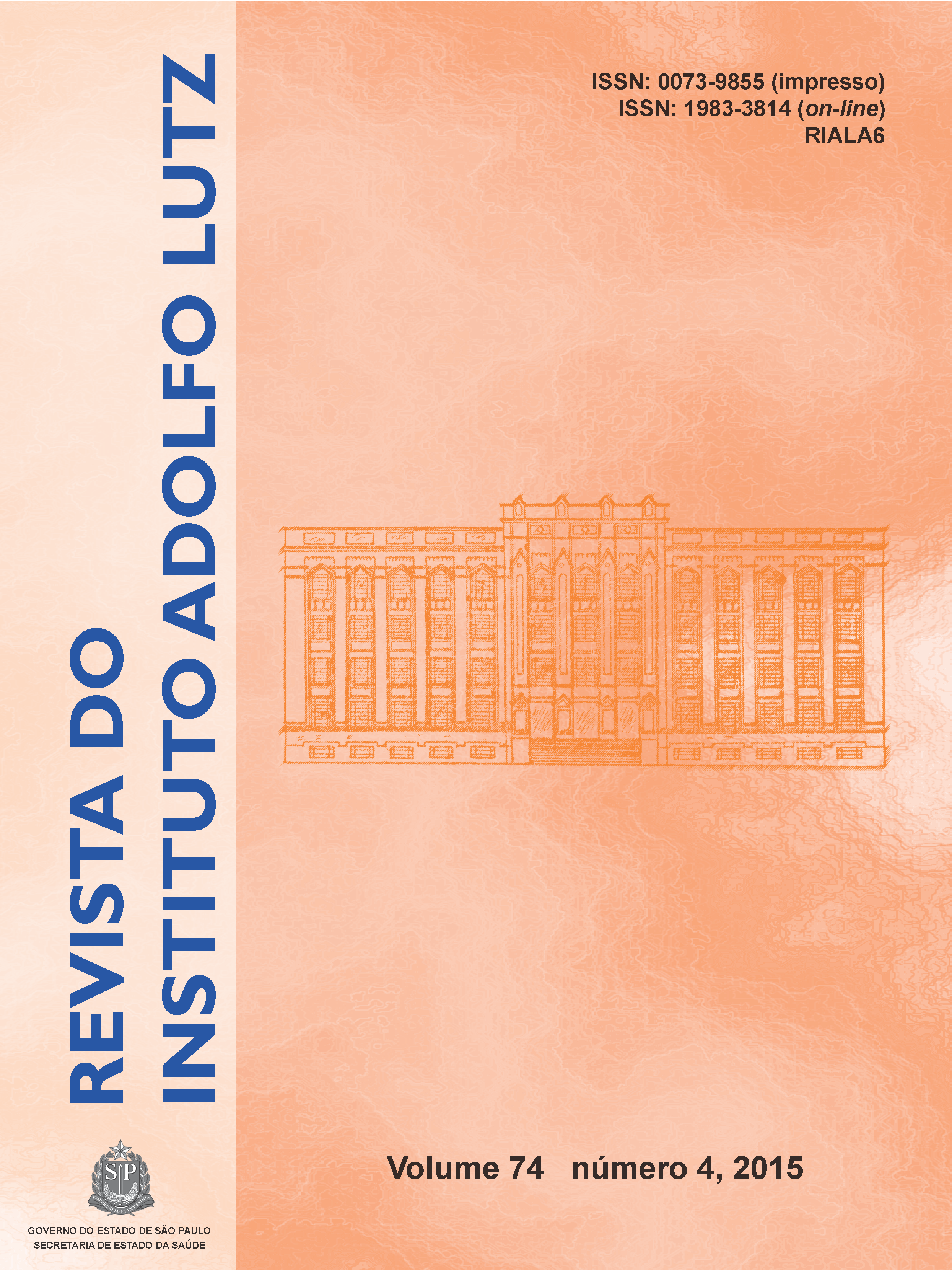Abstract
The Adolfo Lutz Institute (IAL) conducts laboratorial researches concerning the production of early evidence driven by law-suit processes. This study reports an investigation for analyzing the suspected presence of broken glass in a red wine, referring to a law-suit of city of Ribeirão Preto region. In April 2013 a wine sample was sent to the Food Microscopy Laboratory of IAL-Ribeirão Preto to confirm the presence of a foreign body and their identification. Analyses were made by dissolving the sample and by examining under stereoscopic and optical microscopy. Dreg was found in the bottle neck, and sediments containing crystals of varied sizes and shapes were deposited on the bottom. These crystals were sent to the Department of Cellular and Molecular Biology at Medical School of Ribeirão Preto-USP for identifying and quantifying them through the scanning electron microscope JEOL JSM- 6610LV and EDS (Energy Dispersive X-ray Spectroscopy). Silica was not detected, and this finding ruled out the presence of broken glasses. Analysis of the found elements suggested the presence of calcium and potassium tartrate salts in this wine. Although these crystals are not harmful to human health, they might change the wine aspect and cause rejection by the consumers.
References
1. Larentis BZ. Sistematização do APPCC para uso nas vinícolas: o caso do vinho Merlot da vinícola Larentis [dissertação de mestrado]. Caxias do Sul (RS): Universidade de Caxias do Sul; 2014.
2. Meneguzzo J, Manfroi L, Rizzon LA. Sistema de Produção de Vinho Tinto. Bento Gonçalves (RS): Embrapa Uva e Vinho; 2006. [acesso 2014 Set 18]. Disponível em: [https://sistemasdeproducao.cnptia.embrapa.br/FontesHTML/Vinho/SistemaProducaoVinhoTinto/glossario.htm].
3. Christaki T, Tzia C. Quality and safety assurance in winemaking. Food Control. 2002;13(8):503-17. [DOI: 10.1016/S0956-7135(02)00030-0].
4. Moreira JM. Breves aspectos sobre a produção de provas na ação civil. [acesso 2015 Set 02]. Disponível em: [http://www.abdpc.org.br/abdpc/artigos/JUSSARA%20MARION%20MOREIRA%20-%20VERS%C3%83O%20FINAL.pdf ].
5. Torres AFM. Produção antecipada de prova. Rev Âmbito Jurídico [Internet]. 2002. [acesso 2015 Set 14]. Disponível em: [http://www.ambitojuridico.com.br/site/index.php?n_link=revista_artigos_leitura&artigo_id=4579].
6. Food and Drug Administration – FDA. FDA Technical Bulletin number 5: Macroanalytical Procedures Manual; 1984. [acesso 2014 Abr 11].Disponível em: [http://www.fda.gov/Food/ScienceResearch/LaboratoryMethods/ucm2006953.htm].
7. Rizzon LA, Meneguzzo J. Suco de uva. Bento Gonçalves (RS): Embrapa Uva e Vinho; 2007. 45 p.
8. Andrade MJC. Estabilização tartárica de vinhos tintos por combinação de nanofiltração e permuta catiônica [dissertação de mestrado]. Porto: Universidade Católica Portuguesa; 2012.
9. Marcel M. Os defeitos e os “defeitos” do vinho. [acesso 2014 Out 23]. Disponível em: [http://revistaadega.uol.com.br/artigo/os-defeitos-e-os-defeitos-do-vinho_436.html#ixzz3OFzRnJ2c]

This work is licensed under a Creative Commons Attribution 4.0 International License.
Copyright (c) 2016 Instituto Adolfo Lutz Journal
